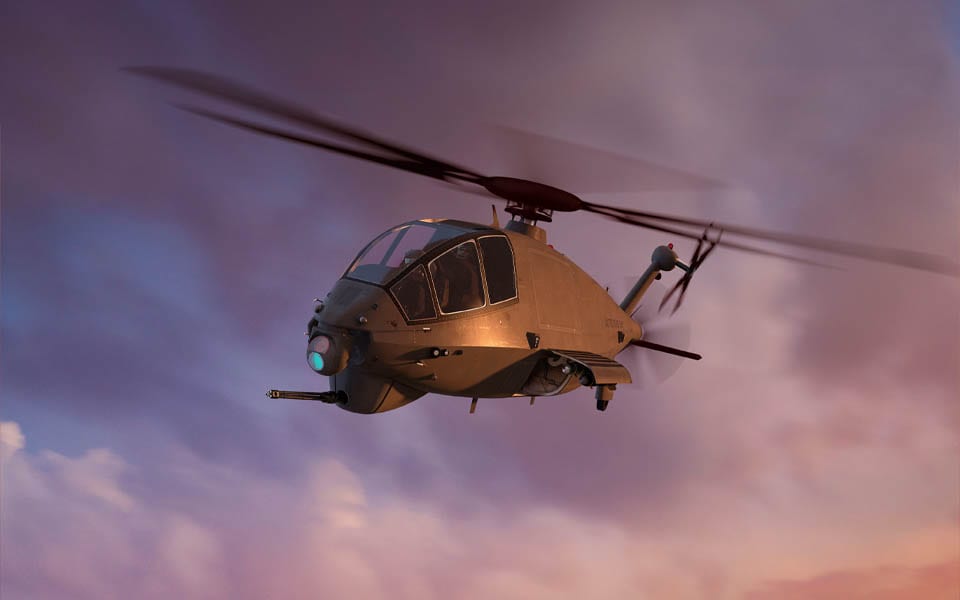
Boeing unveiled its design for the U.S. Army Future Attack Reconnaissance Aircraft (FARA) competition on March 3. The design is to feature touch screen displays, a reconfigurable cockpit, and flexible avionics, Boeing said. Photo: Boeing
Boeing unveiled its six-bladed main rotor/rear propulsor, single engine, tandem seating design for the U.S. Army’s Future Attack Reconnaissance Aircraft (FARA) on March 3, a blueprint that also features a “state-of-the-art cockpit with a reconfigurable large area display and autonomous capabilities,” the company said.
Up until March 3, Boeing had been mum on its FARA design, as company officials said that they did not want to give a leg up to other FARA competitors.
“Boeing FARA is designed for interoperability within the ecosystem of all-joint domain operations,” Boeing wrote in an email to Avionics International when asked to specify such autonomous capabilities. “Advanced virtual modeling informed the design of the Boeing FARA Pilot Vehicle Interface (PVI) that minimizes crew workload and provides cognitive decision aiding to enable supervised autonomy. Boeing has also demonstrated the ability to supervise advanced teaming with unmanned air systems and surrogate ALEs [air-launched effects] from the FARA PVI.”
This month may mark a key milestone in the competition, as the Army is to winnow the field from five competitors to two. The latter are to participate in a fly-off, likely in 2022 or 2023, and the Army hopes to field the first FARA aircraft in 2028.
Boeing described its FARA design as having a “modern, intuitive and reconfigurable cockpit equipped with flexible avionics, autonomous capabilities and a reconfigurable large area display with touch screen capabilities for simplicity and ease of navigation.”
Boeing declined to specify how the FARA design’s avionics are flexible, “due to competition sensitivities,” and the company declined to name its avionics and other suppliers for the FARA design when asked by Avionics on March 3.
Up until March 3, Boeing had been mum on its FARA design, as company officials said that they did not want to give a leg up to other FARA competitors.
The Army describes FARA as a “knife fighter” helicopter that will fill the gap left by retiring the OH-58D Kiowa Warrior. The service said that FARA “will be capable of achieving and sustaining overmatch against potential competitors and enduring asymmetric threats by closing or mitigating gaps in Army aviation attack and reconnaissance.”
In January, 2019, Boeing completed a series of six wind tunnel tests on a 30 percent scale model of an AH-64E Block II compound helicopter, which the company says it could field by the end of 2028. The compound Apache, which Boeing funded with internal research and development funding, could boost Apache capabilities and increase its speed to keep up with whatever design the Army selects for the Future Long-Range Assault Aircraft.
The AH-64E Block II compound helicopter would feature a wing and a rear propulsor, increase aircraft speed to 185 knots, increase payload to 5,900 pounds hover out of ground effect (HOGE) on takeoff, and increase range to 460 nm.
Like the compound Apache, the Boeing FARA design has a rear propulsor, but otherwise the designs appear dissimilar.
The AH-64E has a maximum gross weight of 23,000 pounds, while the Army is seeking a less costly, 14,000 pound helicopter for FARA.